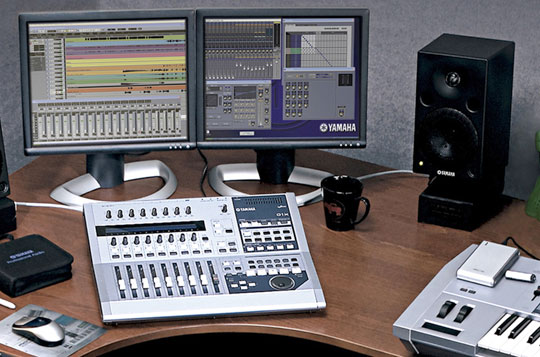

GETTING STARTED
Ok, you've go the mics, cables, preamps, recording medium. You will be tempted to skip ahead and start recording. Resist the temptation at least until you have read this page.
ELIMINATE OUTSIDE NOISE
Eliminate nuisances like air conditioners by shutting them down temporarily during recording of, if you can't try to put the fan on "continuous" or "on" setting so that the fan will run and there will be no abrupt starts and stops of the fan. Also many noises can be eliminated with the judicious use of partitions of heavy cloth or other absorbent objects. If you are picking up outside cars or foot traffic then close the windows and drape them with heavy fabric.
SOUND ADVICE: Speaking Tips
One of the most basic skills in the world of audio is the ability to make good, clean recordings of the spoken word. You may have some of the best equipment, but if your listeners cannot understand what's being said, then all that hard work you put into the setting up of your equipment will come to naught.
The human voice is the most subtle of instruments and we assume no prior knowledge of this subject on your part, and we don't expect you to have access to a recording studio or fancy equipment. We do, however, expect you to try these recording tips on your next project.
USE A GOOD MICROPHONE
Because the spoken word is the most important audio you'll record, you will want to make sure you use the best microphone as possible. Good microphones are expensive, but a resourceful interviewer can beg, borrow or rent the appropriate equipment if necessary. If you're a student, consult the school media lab or instructional resource center.
Obviously you will want to use the best microphone you can get for recording. The long answer to what is the best is a completely different article. The short answer is: get a simple handheld or stick microphone. When considering what you can afford, remember that your microphone will give you a lifetime of service.
USE A POP FILTER
You might get a few audible, airy popping sounds when the speaker speaks the letters P or T directly into the microphone or some windy noises from S sounds. To remedy these plosives and sibilants, you can use a pop filter, a circular piece of thin fabric suspended between the microphone and the speaker's mouth.
KEEP THE SPEAKERS MOUTH CLOSE TO THE MICROPHONE
One of the most common problems with voice recordings is the speakers inability to keep his or her mouth close to the microphone. Coach your speaker to keep his or her head pointed straight towards the microphone. Don't be afraid to re-do multiple takes it that's what you need for a good, clean recording. Test your equipment before you start.
INTRODUCING SPEAKERS
When doing a recording where there are two or more persons, it is imperative that each person introduces himself/herself. This enables the transcriber to identify a speaker. If not, and speakers all sound similar, if not the same, especially they way they speak (all speaking the same lingo), this is extremelly difficult if not impossible to establish who is speaking. A speaker will then be referred to as [SPEAKER].
Remember, do not all speak at the same time, which we love to do, this drowns out the other person, especially if that person is further away from the microphone, and this will prevent [indistinct : speaking simultanously] being inserted into the transcript.
Remember, we as transcriptionists have to listen to this audio through headphones, and bad recordings can take up to 3 times longer to transcribe, and could result in your document taking longer to return to you and filled with the proverbial [indistincts] and [inaudible] text throughout your document.